StableNet® Blog
Regular posts on all things StableNet® from a sales, techie, or marketing perspective

StableNet® Blog
Regular posts on all things StableNet® from a sales, techie, or marketing perspective

StableNet® Worldwide
Who is our competitor?
The view from our CEO of N. American Operations
April 9th 2021, Würzburg
It’s not an easy question to answer. There are many and there are none.
We face three primary types of competition, for various possible customers in the NMS arena.
The customer types range from enterprises that need to secure the health of their network for production purposes to Telcos that require service assurance for the network services that they provide to their clients, and anything in-between. In all cases, ensuring the health and availability has been recognized as being vitally important to the organization.
The home grown solutions
In many cases, older enterprises, where technology has evolved over the years from legacy systems and huge mainframes to the modern infrastructures, servers, and cloud architecture, engineers have created their own scripts, programs, and tools to fit their requirements and business processes. Many of these tools have evolved with the technologies and were adapted over time by one or more engineers. There are still companies that employ a team of developers to maintain the tool base as technology rapidly changes which provides new challenges. The down side is that these self-developed tools are typically tied to a specific person who wrote the code. If that person is no longer available, it can be tough to understand the original code and it may be wiser to just have it rewritten by a new engineer. This can be due to the code not being documented properly or that the original code is developed in a language that is no longer taught. These scenarios make the company dependent on that one person who knows the code. Envision a multimillion-dollar company dependent on a single specialist working in the basement of the company, that management most likely doesn’t even knows exists, and the network ceases to function in his absence. The C-level management goes from managing a company to managing panic whilst the IT team tries desperately to reach that individual that can revive the network. After this incident, management now knows the name of the specialist in the basement, and he is treated like a hero when he does a quick fix and everything is up again. The story is true; I was that specialist. Unfortunately, I was the only one that learned a lesson from this occurrence. The company continued with business as usual but I never make my endeavors dependent on sole individuals.Open Source Solutions
Companies that don’t recognize that their network is the backbone of their enterprise like to keep it on a low budget. There are numerous open source tools available on the web. Some are surprisingly good and can easily compare to boxed solutions in function and visualization. The downside is, they do not come with SLA’s or support. In the event the software fails and you lose control of your network, you better be ok with not being in business for a few hours… or days. We have encountered open source software being utilized in very large enterprises. This weak link in the service assurance is typically not recognized until its failure. If things aren’t maintained in the open source, this can cause a plethora of issues (like upgrades or updates on systems in the network or OS updates on the machine it’s installed on). This results in that “free” software being far more expensive in the long-run and could be a career-altering experience.Boxed solutions
Boxed or off-the-shelve solutions are software packages you can buy with standard warranties, SLA’s, and support. These come with various foci. Some are sold by the manufacture of devices you have architected into your network, typically resulting in good insight to those specific devices. Almost every device vendor provides their own monitoring and management tools, resulting in a multitude of tools that show you fractions of your network, but not the whole picture. Taking into consideration that monitoring is not the only task necessary to ensure your services, you will need to obtain additional software to cover back-up and configuration, root cause analysis, and inventory management, etc. Utilizing multiple tools will result in additional costs in topic-specific resources, training, and an increase in physical and virtual footprints, i.e. desks, PC’c, servers, databases, etc. The indirect cost to a multiple-tool environment is typically not well thought-out. VOIP depicts this very well. Many large enterprises entertain a NOC for the network and a dedicated team for the phone system. The VOIP team requires its own versions of network management tools to provide service assurance. Some companies even have dedicated teams for their WiFi or IoT services. In any case, most of these solutions do not embrace the network as a whole. This is due to the fact that you get what you buy in the box and adjust your business process around the functionality of what is provided. To fill the gaps, IT is forced to depend on self-developed tools or, because it is a common problem, turn to open source. Therefore, placing weak links in business processes that management believed were covered because they gave IT a budget… So how do you ensure Inventory, Fault, Performance and Service Management on a single platform that is Vendor Agnostic and easy to integrate which provides high performance while keeping hardware requirements at a minimum? The easy answer is: buy StableNet® . However, it’s never that easy. Most of the tools mentioned above are built for purpose. Which is why they are all competitors to StableNet® , in their specific function. StableNet® is not a tool. But rather a solution with a flexible tool kit. StableNet® can not only do what the above mentioned tools do, but also fills the gaps and ensures the user sees the whole picture of the network’s health. StableNet® can interface to devices that were never intended to be part of the typical network. If they have an interface which we can access, we can monitor it, back it up, etc. These devices can range from environmental to fleets of vehicles, and much more. Your business processes are defined in StableNet® and can even be automated.That’s a pretty big statement and most people haven’t considered that such an all-in-one solution even exists. Which is why we take the biggest pain point that a client perceives and create a Proof-Of-Concept to show how it is resolved. Typically, the POC is then expanded to show how StableNet® can provide insight and resolution to other topics originally not considered by the client as the realization of how boundless the StableNet® solution actually is. And since it is a solution and not a tool, even the engineers writing code for their own purpose can still be an important part of the solution. Much of the code scripted can be converted into the tool kit to provide that specific purpose if it’s not there already.
Coming back to my original statement of there are many competitors and there are none, StableNet® is a single unified code built for scale and management of large, heterogeneous network infrastructures. It embraces any device which it is given access to, provides automation, and is highly customizable. So far, I have seen no other. Consequently, there is no real competitor…

Dr. Andrew JE Tiedeman
CEO @ Infosim® Inc., USA
Dr. Andrew JE Tiedeman is a seasoned executive with over 20 years of management experience in networking technology and software. He is highly respected and known for implementing strategies resulting in growth in new and existing markets while maintaining strong relationships and high integrity. He joined the Austin-based team in June 2016, where he leads the expansion of the Infosim® footprint throughout the Americas.

Software
Made in Germany
